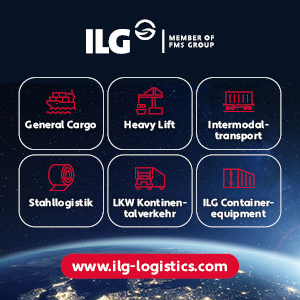Since 29 June, ships coming from the direction of Deggendorf can reach the bayernhafen locations Regensburg and Passau again. Late on Thursday evening, the water and shipping office opened the 25-kilometer-long section of the Danube for navigation again.
For one week, shipping was stopped after two ships got stuck near Pfelling. Christian Hantke, Managing Director / Plant Manager at Zweckverband Donau-Hafen Deggendorf, comments on this unusually long closure of the waterway: “The water-side transhipment in the port of Deggendorf had virtually come to a standstill.”
In the port of Deggendorf, some 30 ships and push barges were waiting for the end of the shipping stop. Together they have a loading capacity of more than 55,000 tonnes. More than 2,000 trucks would be needed to provide such transport capacity. This would be equal to a traffic jam of half the A3 motorway between Deggendorf and Regensburg. For a whole week.
After the traffic cleared on the Danube, the harbor cranes in Regensburg and Passau were switched on again on Saturday. Due to the continuing drought and the uncertainties in the Danube section of Straubing-Vilshofen, lighterings are currently necessary. The cargo vessels adapt their cargo at the bayernhafen locations in Regensburg and Passau to the daily unloading depth by transferring some of their cargo to another ship or temporarily storing it on land.
For this purpose storage capacity is available in both harbors. In the future, bayernhafen will also be offering lightering to shipping companies, which is so important for the shipping and freight industry, at the Passau-Schalding location, which saves costs.
The bayernhafen Group is thus supporting the package of measures announced by the Federal Minister of Transport, Andreas Scheuer, for this legislative period, with the aim of making the port-vessel-waterway system even more efficient. The Committee on Budgets in the Bundestag had already approved a reduction in train path charges last week in support of the railways. The inland ports as points of interconnection offer ideal conditions for further advancing rail and inland waterway vessels.












